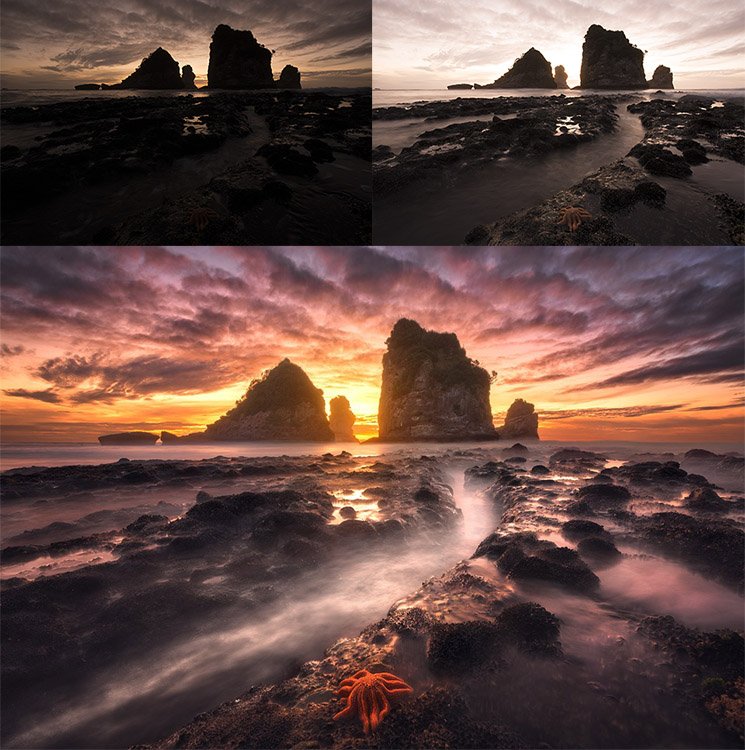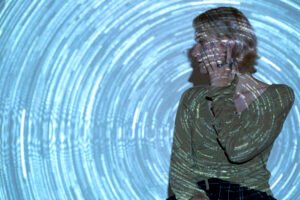Night photography has an undeniable magic, city lights twinkle like stars, the Milky Way paints the sky with mystery, and the stillness of the night allows for creative compositions you simply can’t capture during the day. But photographing at night comes with challenges: limited light, high contrast between bright and dark areas, and the struggle to capture detail in both the shadows and highlights. This is where multiple exposure blending emerges as a powerful technique, enabling photographers to create breathtaking night images that maintain detail, depth, and atmosphere.
Understanding the Power of Multiple Exposure Blending
Multiple exposure blending is a post-processing technique where two or more exposures of the same scene are combined to create a single image with a balanced exposure. Instead of relying solely on your camera’s sensor to capture every detail in one shot, you take multiple images, often at different exposure levels, and merge them in software like Photoshop or Lightroom.
For night photography, this is particularly valuable. One exposure might capture the glowing city skyline perfectly, but lose details in the foreground shadows. Another might bring out stars and subtle textures in the dark sky, but blow out the highlights of streetlamps or neon signs. By blending these exposures, you create a harmonious image where no detail is lost to overexposure or crushed into blackness.
Why Multiple Exposure Blending Works So Well at Night
The human eye adapts quickly to darkness, allowing us to see a broad range of tones even under minimal light. Cameras, however, have limitations in dynamic range; they struggle to record both the faint stars and the bright lights in the same shot. Multiple exposure blending bridges this gap by simulating how we perceive the scene.
For example, when photographing a night cityscape, you might capture one exposure focused on the architectural lights, another for the shadowed streets, and a third to bring out sky detail. When blended, the result is a photograph with stunning clarity, depth, and visual richness.
This technique also reduces noise, a common issue in long-exposure night photography. By layering and blending exposures, you can average out noise while enhancing fine details.
Practical Tips for Capturing Exposures to Blend
- Use a Tripod:
Stability is essential for multiple exposure blending, as even a slight movement can misalign your shots. - Bracket Your Shots:
Use your camera’s auto-bracketing function to capture several exposures at different shutter speeds. - Shoot in RAW:
RAW files preserve the most detail and tonal information, giving you greater flexibility during blending. - Focus on Composition First:
Even the most advanced blending can’t fix poor composition. Frame your shot with intent before you start bracketing. - Limit ISO Variations:
Keep your ISO consistent across exposures to prevent noticeable noise differences when blending.
Post-Processing for Stunning Results
Once you’ve captured your multiple exposures, you’ll need to blend them in post-processing. Popular methods include:
- Layer Masking in Photoshop: Place different exposures in separate layers and use masks with a soft brush to reveal or hide portions of each exposure.
- Luminosity Masking: More advanced, but offers precise control over blending based on brightness values.
- HDR Software: Programs like Aurora HDR or Lightroom’s HDR Merge can automate blending, but manual control often gives more natural results.
The key is subtlety — the goal is to create a balanced image that feels realistic, not overly processed.
Creative Possibilities Beyond Realism
While multiple exposure blending is often used to create natural-looking photographs, it can also be a playground for creativity. You can combine exposures from slightly different moments to add light trails, emphasize motion, or layer in elements like fireworks and passing vehicles. In astrophotography, blending multiple shots can reveal intricate star fields without blowing out the foreground.
Conclusion
Multiple exposure blending is not just a technical workaround; it’s a creative tool that allows photographers to tell richer visual stories at night. By combining the best elements of multiple exposures, you can create images that reflect the depth, atmosphere, and subtle details that our eyes perceive but cameras alone can’t capture. Whether you’re chasing the glow of a city skyline, the quiet beauty of a moonlit forest, or the grandeur of the Milky Way, mastering this technique will elevate your night photography from ordinary to extraordinary.




